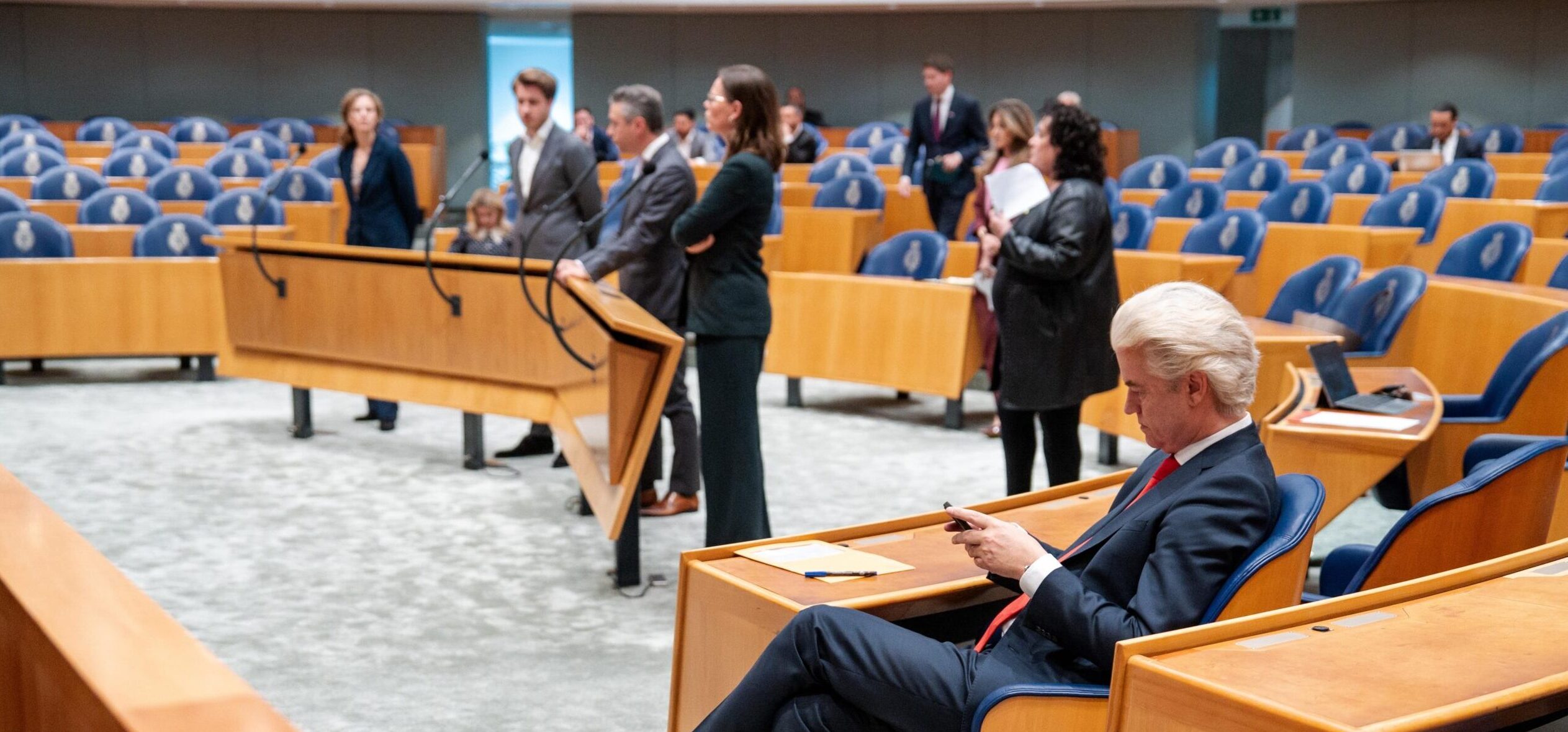In view of the parliamentary elections at the end of the month, four PhD candidates from the Wageningen School of Social Sciences (WASS) organized a seminar on the dynamics and rhetoric in the Dutch elections. What can history tell us about the current political landscape? And what does Wageningen’s research on polarization tell us? Is it really as extreme as people claim? (Spoiler: no.)
The seminar was entitled From Pillarization to Polarization. Koen Vossen, an assistant professor in Political Sciences at Radboud University, was invited to give an explanation of the parliamentary history of the Netherlands since the Second World War. He brought his topic to life with fascinating quotes and trivia. For example, when talking about the highly segregated Dutch society of the post-war period (divided into Catholic, Protestant, socialist and liberal ‘pillars’ in a system known as pillarization), he quoted the Yale political sciences professor Robert Dahl: ‘In theory, your country shouldn’t even exist’. That is because a country with multiple religions that is segregated to such an extent that the different communities ‘live apart from one another in something verging on apartheid’ (in Vossen’s words) is almost always a recipe for civil dissent and instability. ‘But pillarization actually brought the Netherlands social and political stability for a long time,’ said Vossen.
Political climate
He highlighted the stability of the Dutch post-war political landscape with a comparison: the post-war hegemony of the Christian parties lasted longer than the Soviet Union. But that stability ended with the start of the new millennium.
According to Vossen, that was mainly because the political establishment was unable to respond appropriately to the social malaise after the 9/11 attacks and the murder of the Dutch politician Pim Fortuyn (‘The first political assassination in the Netherlands since the seventeenth century, and one committed by someone from Wageningen at that,’ said Vossen). He also mentioned the assassination of the outspoken filmmaker Theo van Gogh, who was highly critical of Islam, after which the political climate became far grimmer. Since then, the Netherlands has seen numerous new political parties form, some of which have sunk into oblivion again.
The Netherlands has always had a lot of political parties, but the differences between the parties are often very minor
Koen Vossen, assistant professor in Political Sciences at Radboud University
The large number of political parties has sometimes been interpreted as a sign of polarization and a lack of common ground, but Vossen disagrees. ‘The Netherlands has always had a lot of political parties. It is important to realize that the differences between the parties are often very minor; you try explaining to a non-Dutch person the difference between the two Christian parties ChristenUnie and CDA, for example. Freud spoke of “the narcissism of small differences”. That seems to me to be a better description of the Dutch political system.’
Polarization
The supposed polarization is also the subject of study in the Strategic Communication chair group. The Wageningen Election Study looks at this issue, explained Professor Rens Vliegenthart. This study is a long-term panel survey on the influence of social and traditional media on political preferences and phenomena such as populism and polarization. The most recent results were just in, and assistant professor Emma Turkenburg had sacrificed part of her weekend to carry out a quick initial analysis so she could give the seminar attendees a first impression of the findings.
One result is that there is not nearly so much polarization as you might think in the Netherlands. ‘People attach value to other people’s opinions and they find consensus important,’ concluded Vliegenthart. Turkenburg, who will be teaching a new Bachelor’s course on communication and polarization next year, presented the graphs with the results. None of the various types of polarization (see inset) showed a clear upward trend. However, there were differences in how people discuss issues.
Gaining votes
The (provisional) research results give a different picture of polarization than the one the respondents themselves have, concluded Turkenburg. ‘Most respondents see a highly polarized country and are very worried about it.’ She did not yet have an explanation for this, but she had her suspicions: ‘It could be to do with the changing media environment. Perhaps people are becoming more exposed to extreme points of view. It could also be because politicians emphasize the differences. It can be strategically smart to sketch a picture of a divided society in order to gain votes.’
It can be strategically smart to sketch a picture of a divided society in order to gain votes
Emma Turkenburg, assistant professor at the Strategic Communication chair group
Turkenburg pointed out that if people overestimate the degree of polarization, that can be a problem. ‘Polarization isn’t always problematic as such, but people having the wrong perception is a risk. If people think society is incredibly divided and different groups hate one another, they may act accordingly. The perception of extreme polarization can then become a self-fulfilling prophecy.’
Polarization concepts
Turkenburg distinguished between four types of polarization. First, there is ideological polarization in which people have strong opinions on a particular topic. The second type is affective polarization, which is about differences between groups – an ‘us versus them’ mentality. A good example is Ajax supporters hating Feyenoord fans and vice versa. The third type of polarization concerns differences in beliefs, for example in whether climate change is a hoax or not. The fourth type is perceived polarization, ‘seeing the gap’: the situation in which people focus on extreme views and overestimate how divided society is.

 Photo Shutterstock
Photo Shutterstock 

